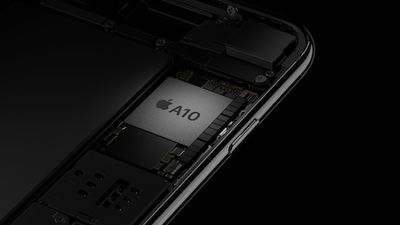After years of recruiting graphics architects, Apple has gradually shifted from licensing PowerVR graphics to designing its own custom GPUs for iPhones, according to David Kanter at Real World Technologies.
The new graphics processor is said to have first shipped with the A8 chip in the iPhone 6, with successive versions built into in the A9 and A10 Fusion chips powering the iPhone 6s and iPhone 7 lineups respectively.

For context, Kanter said a modern GPU has three major components that work together in harmony to render graphics:
The first is the fixed-function graphics hardware, which is responsible for tasks like processing API commands, triangle rasterization, and raster output. The second is the shader core, which is the heart of the GPU and executes programmable shaders (e.g., vertex, geometry, pixel, and compute shaders). Last, the graphics driver is the software that runs on the CPU and ties everything together, coordinating the activities of the GPU. The driver transforms graphics applications written in the Metal or OpenGL ES APIs into a series of commands for the fixed-function hardware and programmable shaders that execute on the shader cores.
Apple previously relied on PowerVR chipmaker Imagination Technologies to supply fixed-function graphics hardware, shader cores, and drivers for older-generation iPhones, but Kanter said Apple has since replaced the programmable shader cores with its own more efficient and higher performance design, and developed its own driver and compiler to emit code for its architecture.
While Apple's GPU architecture has never been publicly documented, Kanter contrasted information from WWDC 2016 sessions and frameworks against basic PowerVR compiler and optimization manuals, concluding that it is clear that the shader core in Apple's GPU is architecturally very different from the PowerVR line.
Apple's custom GPUs still appear to use some of the PowerVR fixed-function graphics hardware, but it is clear the company's dependance on Imagination Technologies has decreased significantly in recent years. Kanter speculates that if Imagination Technologies were acquired, or fell behind from a technical standpoint, Apple could simply design its own fixed-function hardware.

Apple was actually rumored to acquire Imagination Technologies earlier this year, but later said it did not plan to make an offer on the England-based company at the time. Nevertheless, in recent months, Apple has recruited at least two dozen employees from the chipmaker, including former COO John Metcalfe, and those graphics engineers may have played a role in developing Apple's custom GPUs.
Kanter said Apple has in fact assembled a GPU design team and a graphics driver team that together implemented a large portion of the custom GPUs in the A8, A9, and A10 Fusion chips. In addition to former PowerVR engineers, this team likely includes recent hires from AMD, Google, Intel, and Nvidia.
The transition towards custom GPUs has is said to have resulted in several strategic advantages for Apple beyond increased performance and efficiency, including tighter ecosystem control, better time-to-market and scheduling, reducing its reliance on its suppliers, and reducing bugs without its competitors benefiting.
Full-Length Article: Look Inside Apple’s Custom GPU for the iPhone























